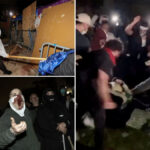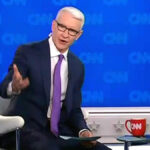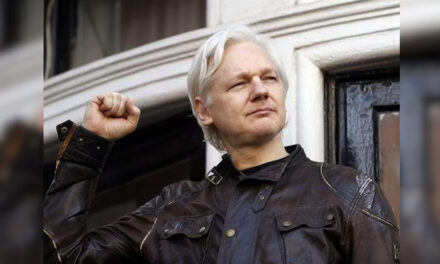
Black Lives Matter Portrays MLK as 'Radical'
The notorious Black Lives Matter (BLM) movement is taking advantage of MLK Day to push its radical agenda.
Martin Luther King Jr. is known for his nonviolent marches and push to pursue equality through peace. Black Lives Matter, which claims to have a similar goal, is known for mob violence and skirmishes with the police.
About similar riots that broke out in 1967, King said: “Returning violence for violence multiplies violence, adding deeper darkness to a night already devoid of stars.” And yet BLM claims that MLK Day will allow us to “engage about the real radical King they don’t want you to know about!”
Charlene Carruthers, director of BLM’s Chicago branch, argues that we do Martin Luther King Jr. a “disservice when we try to tell a flat story of turning the other check. It was never simply that.”
King’s niece Alveda urges people to “discuss racism from a peace with justice perspective,” but today’s young activists are connecting MLK’s image to the oft-violent BLM movement.
“There is a Martin Luther King that is important to the resistance movement that we don’t hear about,” insists Abdul Aliy-Muhammad of the Black & Brown Workers Collective in Philadelphia. “We always hear about love and forgiveness… There was also a King who was radical.”
Carruthers insists that “agitation” was at the center of King’s work. That agitation manifests differently today than it did during King’s time, she says. “However, I think King’s work and the work we do are part of the larger tradition of black radical resistance.”
While I do not agree with Carruthers, it makes sense for the BLM movement to identify with King.
The famous civil rights activist – only 26 years old when he found himself in a leadership role – also pushed for a living wage and spoke out against discrimination in the police force, both issues that are still relevant today.
Remembering Martin Luther King Jr. as a community organizer naturally places him alongside Black Lives Matter and other contemporary movements. On top of that, Chicago in particular faces a level of racism not seen in many years. The Windy City has even been labeled “America’s most segregated city.”
Gun violence in Chicago is soaring, with over 770 people shot and killed in 2016. Nearly 50% of the young black men living in Chicago are unemployed or not in school. The state of Illinois has the largest black unemployment rate in the country. The income inequality gap in Chicago is startling, and reports suggest that black residents’ income has decreased by 4% while white residents’ income has gone up by 44%.
BLM Chicago reminds us that “the World Bank and many other entities have released studies that confirm that there is a correlation between income inequality and violence… Chicago’s violence should not be a surprise to anyone who has been paying attention.”
Martin Luther King Jr. pushed for fair housing in Chicago’s North Lawndale neighborhood in 1966. Fifty years later, that same area remains one of the city’s most under-resourced and impoverished neighborhoods. North Lawndale is plagued by gang wars and known as the epicenter of Chicago’s heroin epidemic. The neighborhood is over 90% black.
“We must implement the radical measures King died fighting for right now by demanding fully funded schools, healthcare, jobs, access to housing, free drug-treatment programs, and food,” insists BLM Chicago, adding that Martin Luther King Jr.’s legacy has been skewed over time. “This gross misrepresentation of King is all about the sanitized ‘dream’ devoid of reality.”
BLM Chicago finds itself fighting for the same “basic civil and human rights” today that King fought 50 years ago. “As Martin Luther King Jr. instructed us, we must question the very foundation of this society.”
“He was really focused on poor black people,” says Patrisse Cullors, co-founder of BLM. “Let’s remember the King who was invested in changing the country that he loved so much, who called out elected officials who continued to endanger black people.”
























You of course are referring to Krusty Gnome?
This is how it usually beings - some libturds at some indoctrination camp put some nonsense out as "research" and…
What the Fox, Larry, just crickets? Comforting it is, there is a spot where I can say whatever is in…
Isn't a statute of limitation up on that one. This is litigious Trump going after his old demons he hasn't…
It is interesting how these studies get their 15 minutes of fame. Why didn’t The Dumpster use this to answer…